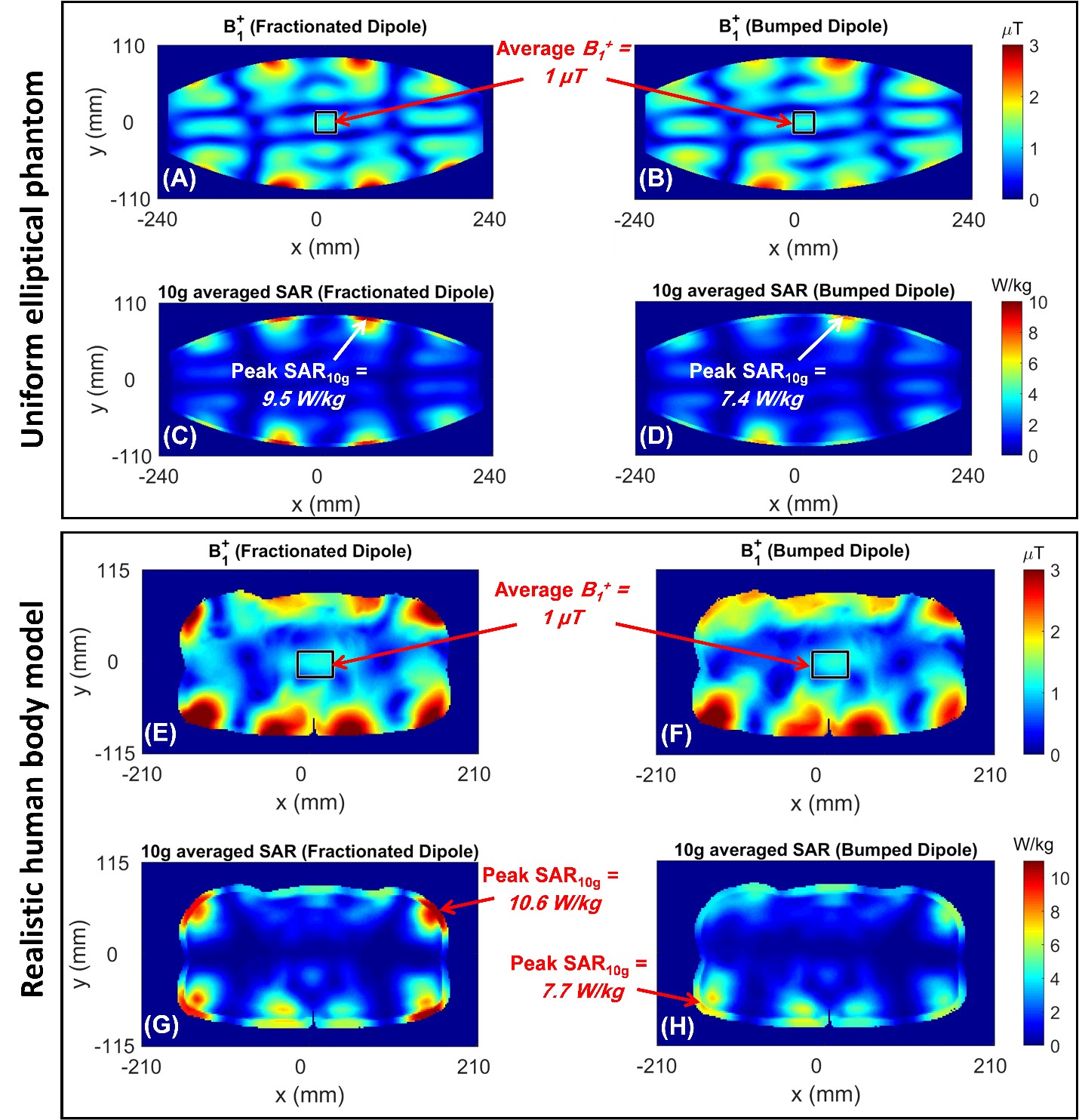Alireza Sadeghi-Tarakameh, who is a PhD student of Ergin Atalar, published the results of a collaborative work between CMRR and UMRAM in a paper entitled “Improving radiofrequency power and specific absorption rate management with bumped transmit elements in ultra‐high field MRI.” The main goal of this study is to facilitate prostate imaging and assure patient safety at ultra-high field MRI. The senior author of the article, Yiğitcan Eryaman, is an assistant professor at CMRR and received his PhD degree from Bilkent University. Other authors of this article, Gregor Adriany, Gregory J. Metzger, Russell L. Lagore, Steve Jungst, Lance DelaBarre, Pierre-Francois Van de Moortele, and Kamil Ugurbil, are from the University of Minnesota.
Abstract
Purpose
In this study, we investigate a strategy to reduce the local specific absorption rate (SAR) while keeping B1+ constant inside the region-of-interest (ROI) at the ultra-high field (B0 ≥ 7 T) MRI.
Methods
Locally raising the resonance structure under the discontinuity (i.e., creating a bump) increases the distance between the accumulated charges and the tissue. As a result, it reduces the electric field and local SAR generated by these charges inside the tissue. The B1+ at a point that is sufficiently far from the coil however is not affected by this modification. In this study, three different resonant elements (i.e., loop coil, snake antenna, and fractionated dipole (FD)) are investigated. For experimental validation, a bumped FD is further investigated at 10.5 T. After the validation, the transmit performances of eight-channel arrays of each element are compared through EM simulations.
Results
Introducing a bump reduced the peak 10g-averaged SAR by 21, 26, 23% for the loop and snake antenna at 7 T, and FD at 10.5 T, respectively. In addition, eight-channel bumped FD array at 10.5 T had a 27% lower peak 10g-averaged SAR in a realistic human body simulation (i.e., prostate imaging) compared to an eight-channel FD array.
Conclusion
In this study, we investigated a simple design strategy based on adding bumps to a resonant element to reduce the local SAR while maintaining B1+ inside an ROI. As an example, we modified an FD and performed EM simulations and phantom experiments with a 10.5T scanner. Results show that the peak 10g-averaged SAR can be reduced more than 25%.
